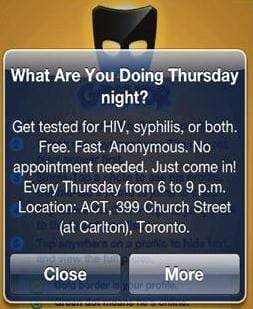
Credit: Matt Watson
While there are many reasons for the rise of sexually transmitted infections (STIs) in Ontario, there’s no getting around the fact that more people are having unprotected sex, says a representative of the Canadian AIDS Treatment Information Exchange (CATIE).
Sean Hosein, CATIE’s science and medicine editor, says infection rates in Canada have been rising steadily for the past decade.
“For the most part, people are having unprotected sex,” Hosein says, noting that the majority of new STIs occur among men who have sex with men, some of whom don’t necessarily identify as gay or bisexual. “In the city of Toronto, researchers believe that about 20 percent of men who have sex with men have HIV. That’s a very high concentration.”
Throughout Canada, STIs continue to be a significant and growing public health concern. Reported rates of chlamydia, gonorrhea and syphilis have been rising since 1997, according to the Public Health Agency of Canada. Chlamydia remains the most frequently reported STI in Canada.
In Ontario, infection rates are concentrated in urban areas.
There are just more opportunities to have sex when you live in the city, says Shannon Ryan, executive director of the Black Coalition for AIDS Prevention. “The more access you’ve got to that pool, the more likely it is you will acquire an infection. That’s just a fact. In a rural community, your opportunities for sex may be more limited.”
Likewise, the ways men hook up for sex is changing, he says. AIDS organizations are facing new challenges in getting the message — and condoms — to men.
“It’s been difficult for us to keep up with the curve,” Ryan says. “Fifteen years ago it was all about bathhouses and clubs, because that’s where guys would go. Now, we are in the world of Grindr, with connections right in your pocket.”
Recent studies suggest that men who hook up online, using sites like Scruff, Grindr and Squirt, are taking greater risks. Ryan suspects that may have something to do with the immediacy and availability of anonymous sex.
“How can AIDS organizations get in the middle of that conversation?” he asks. “Historically, in the bathhouse, we could be in guys’ faces as they walked in, handing them a condom and talking about STIs. In the virtual world, we can’t get into those spaces, unfortunately.”
At the same time, STIs are becoming increasingly difficult to treat by traditional courses of antibiotics. A new drug-resistant form of gonorrhea has recently been reported in Toronto. It is particularly prevalent among gay men.
“This is a clear trend that gonorrhea is getting more vicious and harder to treat,” Hosein says. “Eventually, there will be cases that do not respond to treatment. It’s only a matter of time.”
He says the same is true for other infections, which has researchers worried.
Ontario could reduce infections by investing in targeted public education and awareness campaigns, he says. “Where are the ads for safer sex? We need to go back to the kind of campaigns that we had 20 years ago in newspapers and subways and on billboards.”

 Why you can trust Xtra
Why you can trust Xtra


